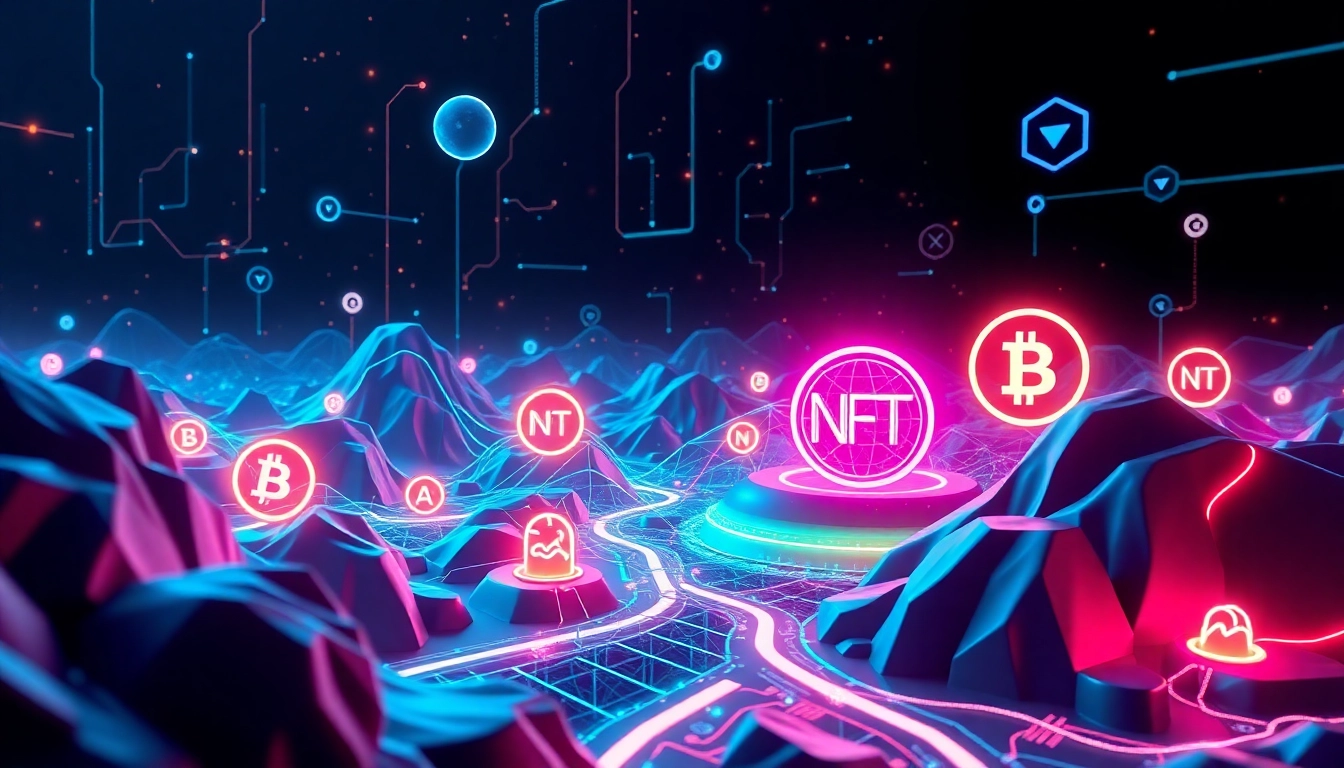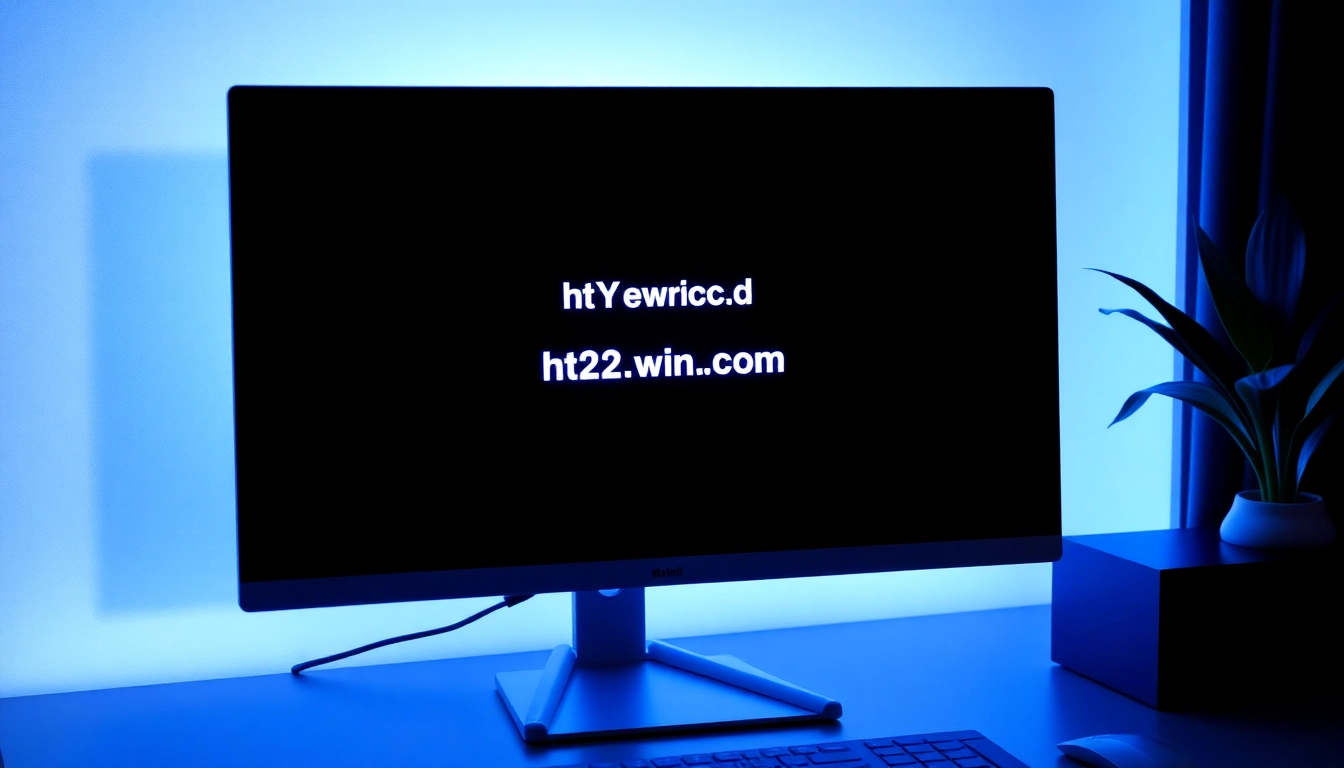Understanding the Foundations of NFT Technology
What Are Non-Fungible Tokens and How Do They Work?
Non-fungible tokens (NFTs) represent a revolutionary development in digital ownership, allowing individuals and entities to establish verifiable uniqueness for digital assets. Unlike cryptocurrencies such as Bitcoin or Ethereum, which are fungible—meaning each unit is identical—NFTs are inherently unique, serving as digital certificates of authenticity for specific items.
At their core, NFTs are cryptographic tokens stored on blockchain networks, primarily Ethereum, although other blockchains like Binance Smart Chain, Solana, and Polygon also support NFT standards. The most widely adopted standard for NFTs on Ethereum is ERC-721, which defines a minimum interface that allows for the implementation of unique tokens, and ERC-1155, which enables semi-fungible tokens and batch transfers for efficiency.
When someone acquires an NFT, they are obtaining a blockchain-recorded proof of ownership of a distinct digital item—be it digital art, music, videos, virtual real estate, or in-game assets. This proof is secured by the blockchain’s decentralized and tamper-proof infrastructure, ensuring authenticity and ownership transferability.
For example, an artist can mint an NFT of their artwork, providing a verifiable claim of original ownership and provenance that persists beyond traditional digital copies. Buyers can then trade or showcase these NFTs on various marketplaces, secure in the knowledge that the blockchain guarantees origin and rarity.
To understand more about the intricacies of creating, buying, and authenticating NFTs, explore our comprehensive NFT Technology Guide.
The Blockchain Infrastructure Behind NFTs
The backbone of all NFTs is blockchain technology—a distributed ledger that records transactions across a network of computers, ensuring transparency, security, and immutability. Each NFT interacts with the underlying blockchain via smart contracts—self-executing contracts with terms encoded directly into code. These smart contracts define the properties, ownership, and transfer functions of the NFTs.
Ethereum remains the dominant blockchain for NFTs due to its mature ecosystem and robust standards. However, alternative blockchains like Solana, Flow, and Tezos have gained traction owing to their high transaction speeds and lower fees, catering to different needs within the NFT ecosystem.
The blockchain infrastructure also guarantees provenance tracking, which is vital for verifying authenticity, especially in art, collectibles, and luxury assets. When an NFT is minted, its metadata—details about the asset, creator, date of creation, and ownership history—is stored on the blockchain, providing an incorruptible record that is publicly accessible and easily traceable.
Recent innovations include Layer 2 solutions and sidechains, which enhance scalability and reduce transaction costs, making the minting and trading of NFTs more accessible. These advancements are crucial for mass adoption and enable a seamless integration of NFTs into various industries.
Key Components of NFT Ecosystems
- Digital Assets: The actual items represented by NFTs, including artwork, music, videos, game assets, or virtual land.
- Smart Contracts: The programmable scripts that define NFT properties, ownership rights, transferability, and royalty distributions.
- Blockchain Network: The decentralized ledger where NFTs are created, transferred, and stored.
- NFT Marketplaces: Platforms where NFTs are bought, sold, or auctioned, such as OpenSea, Rarible, and Mintable.
- Wallets: Digital wallets that store NFT tokens and facilitate transactions, with examples including MetaMask and Trust Wallet.
- Metadata: The descriptive information that provides context about the NFT, often linked to external data sources or IPFS (InterPlanetary File System).
A well-designed NFT ecosystem integrates these components seamlessly, providing users with a secure, transparent, and efficient platform for digital asset management. As innovations continue, new ecosystem elements—like augmented reality integrations and fractional ownership—are emerging, broadening the scope of NFT utility.
Building and Minting Your Own NFTs
Choosing the Right Platforms and Tools
The first step in creating your own NFTs involves selecting an appropriate platform and tools tailored to your needs. Popular NFT marketplaces like OpenSea, Rarible, and Mintable offer user-friendly interfaces for minting without extensive coding knowledge. For more advanced or customized NFT projects, developers often prefer platforms that support creating smart contracts independently on blockchain networks like Ethereum or Solana.
Key factors to consider when choosing a platform include transaction fees (gas costs), support for desired blockchain standards, user interface, community size, and whether it allows for royalty configurations—crucial for creators seeking ongoing revenue from secondary sales.
Besides marketplaces, development tools such as Remix IDE for Ethereum, Truffle, and Hardhat facilitate smart contract creation and deployment on testnets prior to mainnet launch. If you lack programming expertise, services like Mintable or Cargo provide simplified interfaces for minting NFTs.
Step-by-Step NFT Creation Process
- Digital Asset Preparation: Ensure your digital item—artwork, music, or video—is finalized and in a supported format.
- Choose a Blockchain Platform: Decide whether to mint on Ethereum, Solana, or others based on your needs for gas fees, speed, and ecosystem.
- Create a Digital Wallet: Set up a compatible wallet (e.g., MetaMask) to manage your assets and pay transaction fees.
- Connect Wallet to Platform: Link your wallet to your chosen marketplace or minting tool.
- Mint the NFT: Upload your asset, fill in metadata (title, description, attributes), and configure royalty settings if available.
- Confirm and Pay Gas Fees: Approve the transaction, paying the necessary fees to record the NFT on the blockchain.
- Verify Minting: Ensure the NFT appears in your wallet and on the platform, with all associated data confirmed.
Best Practices for Secure and Authentic Minting
Security is paramount in NFT creation. Always:
- Use reputable wallets and platforms with verified security protocols.
- Enable two-factor authentication (2FA) where possible.
- Double-check the accuracy of metadata and ownership details before confirming transactions.
- Be cautious of phishing scams and frauds, particularly when handling private keys or seed phrases.
- Maintain backups of your wallet seed phrases offline in secure locations.
Additionally, consider embedding smart contract royalties to secure ongoing revenue, and utilize provenance tracking tools to authenticate your original work.
Leveraging NFT Marketplaces and Platforms
Popular NFT Marketplaces Explained
Marketplaces serve as digital marketplaces enabling creators and collectors to transact NFTs efficiently. Top platforms include:
- OpenSea: The largest decentralized NFT marketplace supporting Ethereum, Polygon, and Klaytn, ideal for diverse digital assets.
- Rarible: Community-owned platform allowing users to create and sell NFTs without coding knowledge, with built-in governance tokens.
- Foundation: Curated marketplace emphasizing high-quality art and exclusive drops, often with auction features.
- Mintable: Simplified minting platform supporting Ethereum and Zilliqa, suitable for beginners.
Successful engagement requires understanding each platform’s fee structure, community demographics, and technical capabilities.
How to List and Promote Your Digital Assets
Listing an NFT involves connecting your wallet, uploading your asset, and setting sale parameters—price, auction duration, royalties, etc. To maximize visibility:
- Craft compelling descriptions and engaging visuals.
- Use relevant keywords and tags for discoverability.
- Share your listings across social media platforms and dedicated communities.
- Participate in featured drops or collaborations to boost exposure.
Consistent engagement and quality presentation are essential for attracting buyers and establishing credibility.
Business and Investment Strategies with NFTs
Integrating NFTs into Business Models
Companies are increasingly leveraging NFTs for branding, loyalty programs, and digital product sales. Examples include:
– Launching exclusive digital collectibles to reward customers.
– Using NFTs as proof of authenticity for luxury goods.
– Offering virtual real estate or in-game assets tied to branded experiences.
Implementing NFTs in business entails careful planning around intellectual property, legal considerations, and technological infrastructure to support secure transactions and royalty enforcement.
Evaluating NFT Investment Opportunities
NFT investments can be promising but come with risks. To evaluate opportunities:
- Assess the rarity, creator credibility, and historical sales data.
- Monitor market trends and community activity on platforms like OpenSea.
- Understand the utility of the asset—does it have potential for appreciation or functional use?
- Be mindful of market volatility, scams, and regulatory implications.
Diversification and thorough research are key to managing risk in NFT investments.
The Future of NFT Technology and Digital Ownership
Emerging Trends and Innovations
The NFT landscape is dynamic, with innovations such as fractional ownership, augmented reality (AR) integrations, and the use of blockchain for real-world asset tokenization. These advancements facilitate:
– Shared ownership of high-value assets.
– New interactive experiences and virtual environments.
– Integration with Internet of Things (IoT) devices and cross-platform interoperability.
Potential Regulations and Legal Considerations
As NFTs grow in prominence, regulators are scrutinizing their legal status regarding intellectual property rights, securities classifications, and consumer protections. Companies and creators must stay informed about evolving legal frameworks to ensure compliance and protect their assets.
Impact of NFTs on Art, Gaming, and Industry
NFTs are transforming industries by redefining ownership and revenue models. In art, they provide artists with new monetization avenues and control. In gaming, they enable true ownership of in-game items, fostering player-driven economies. Beyond entertainment, NFTs facilitate tangible asset tokenization, supply chain provenance, and fundraising through tokenized assets.



